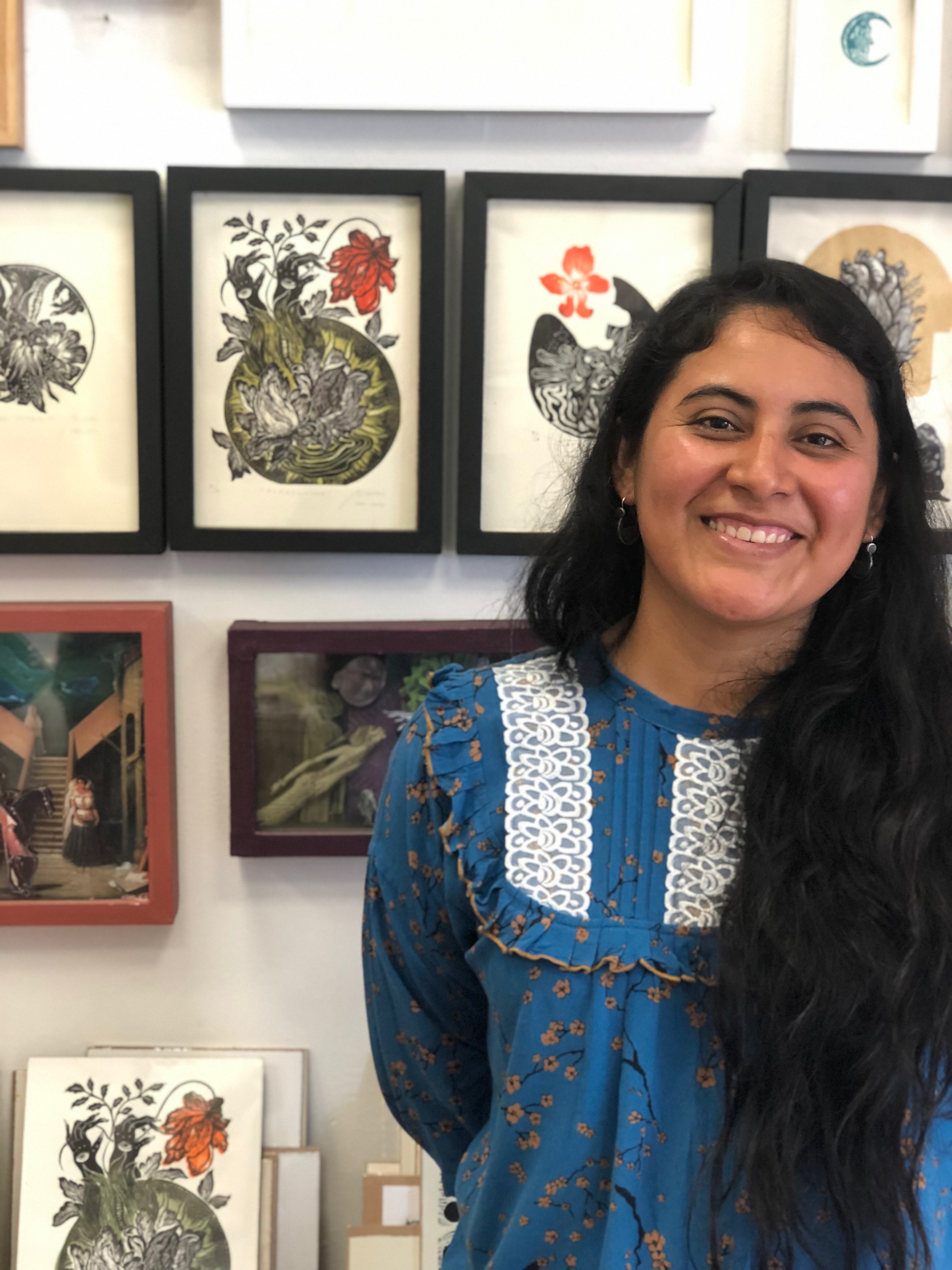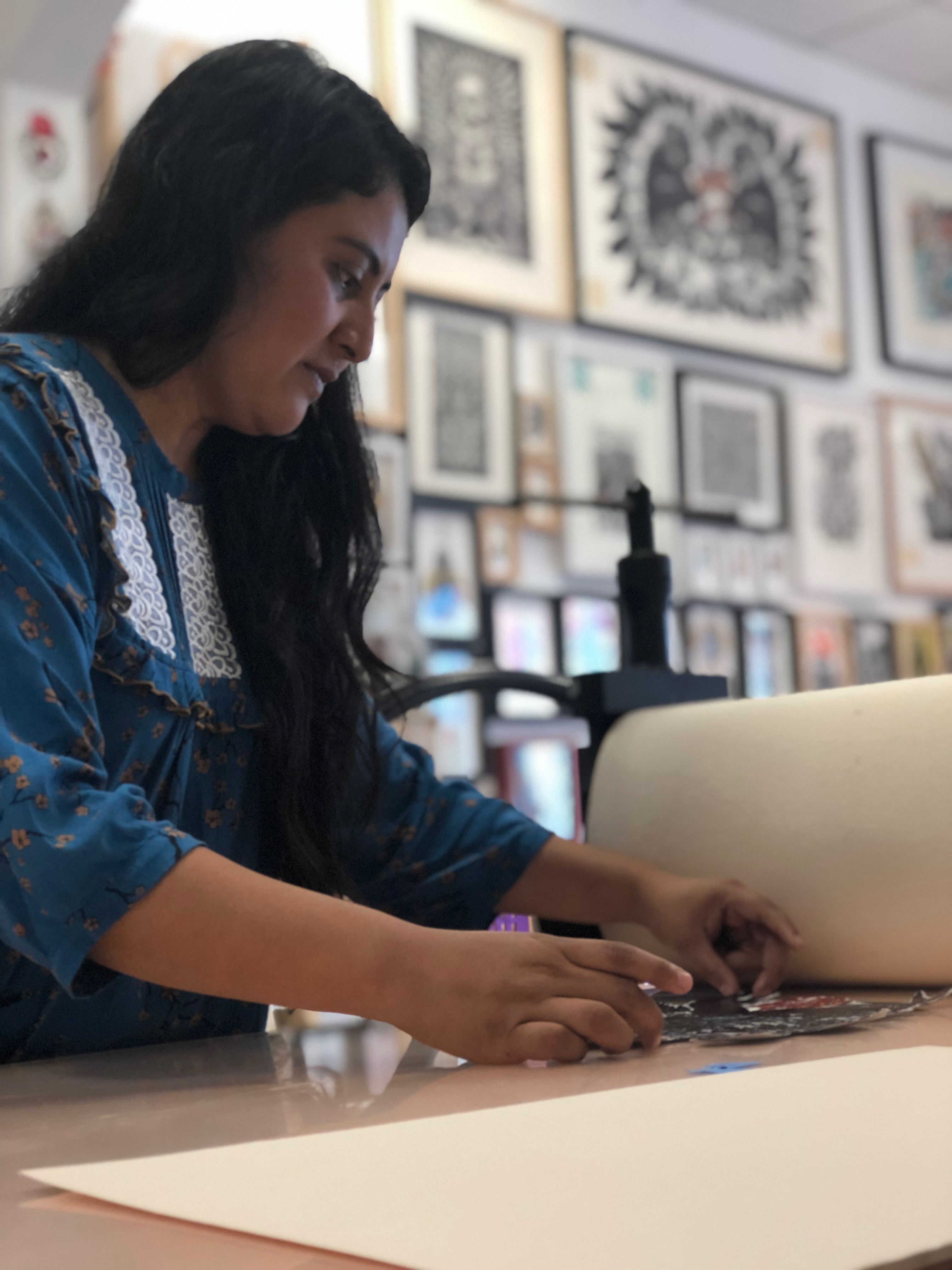UNUM Magazine: Gabriela Morac
12/21/2020
Gabriela Morac
Originally published in UNUM Magazine, Issue 8
UNUM: What was it like growing up in your pueblo?
GM: I grew up in a community that had a lot of advantages and a lot of disadvantages. I don't want to sound feminist because I am not a feminist, but I think this is a big topic in Mexico. I come from a very small Zapotec village outside of Oaxaca, San Jeronimo Tlacochahuaya.
As a woman, as a child, as a girl growing up in a community like this, your childhood is very much marked in sense of your gender. I have two sisters and no brothers. I think it was a little different. I think we grew up with a lot of liberties in our thoughts and the way we were raised. However, there are specific conditions.
Growing up in a community like this brings awareness to sensitivity aside from just gender. In a community where we speak Zapoteca, it's very different. The way everything is interpreted in such a community is very different. The language we use is highly focused on an emotional level, so I feel extremely fortunate to grow up in it for that reason.


As a child, I got to grow in the mountains, around animals and have all of these experiences. Growing up around that was such a natural thing. It forms a distinct thing in you. Very different than the city life. Not better or worse — the simplicity of it is just so distinct. We know who we are.
When I was a kid, I remember being out at those puddles and seeing all the tadpoles in them. All the butterflies. When I go back now, I don't even see those things. It's like they don't exist. And now I think in reality, so few children care about that. They're always on their phones.
The simplicity of all those things form the way a person is. It's a different thing to go get the corn on the cob and know where it came from, planting the seed, seeing it cultivated then harvested.
UNUM: Can you talk about how this has influenced your work?
GM: I feel like my work has been a very long process. I started working with very common Oaxaca-type art. When I started painting, I felt like my work started to become more erotic. Not pornographic, just figuratively different. I had a different phase before that; that eroticism became more organic.
Referring to more of the natural world but also taking in the feminine form. Nature — I see it as representing women. Looking at fertility and life. Women being compared to land and providing food and life.
And now I'm using different symbols that represent things in Zapotec culture. I love to take back that part that represents who I am. The origins go back to more than we could even imagine: in the valley of Oaxaca, our ancestors and everything throughout our generations. So much knowledge about everything that we have lost or forgotten because they have made us believe that it is not useful to have that knowledge. For me, it's so important to take that knowledge back.
For that reason, I take different Zapotec images and use them throughout my art. All different representations of the human form. I recreate the woman as the main figure in my work. In Mexico, even though there is such a macho culture, the woman has always had such an important role.
Like the La Curandera women. They have a different vision. They don't see the human body as just a shell full of organs. It's the construction of a spirit, a heart, a body. They see sickness as not just an outer thing in your body but something in your spirit. That's what I love to believe. When someone goes to school and learns a lot of modern things, those ideologies get replaced. That aspect of life is what interests me, so I come back to those basics and represent them in my work.


I can see that my art still is a little bit erotic, but it has to do more with energy and recognition of my Zapotec culture. The Zapotec language is so beautiful. For example, in Spanish, they say "I have thirst." In Zapotec, it's "my heart is sad, and that means I'm thirsty." In that aspect, Zapotec is so pretty because it is based on the heart and the vital organs.
My mom used to send us to the store to buy sugar with a bundle of corn. That was what we used to buy what we needed. Corn has always had important role in our life. Its origin was here in my pueblo. So that is why corn is something I use so much in my work now. Not only is it fundamental to see the corn, but to understand that it was also used in the process of domestication. The seed of the corn has been modified throughout time. Basically, farmers bioengineering without really knowing they were bioengineering. The most important seeds in Zapotec culture are corn, beans and the pumpkin seed.
When this was a different space, I and one of my friends who speaks Zapotec started a program to bring back Zapotec, to rescue the culture. He and I opened up spaces to rescue that culture.
Now we do workshops. We bring in different printmakers. We provide the material, and they can come here to work on a piece. When they are finished, we print it here. We will print 16 copies; they take half the copies and we keep half. It's an agreement that benefits both sides. We get to know and sell their work, and they get to know the workshop — generating a cultural experience for both sides.
These are all different things that I put into my work. To represent all that Zapotec tradition and culture. In a lot of my pieces, I've names using Zapotec language — because of the meaning that it has.

